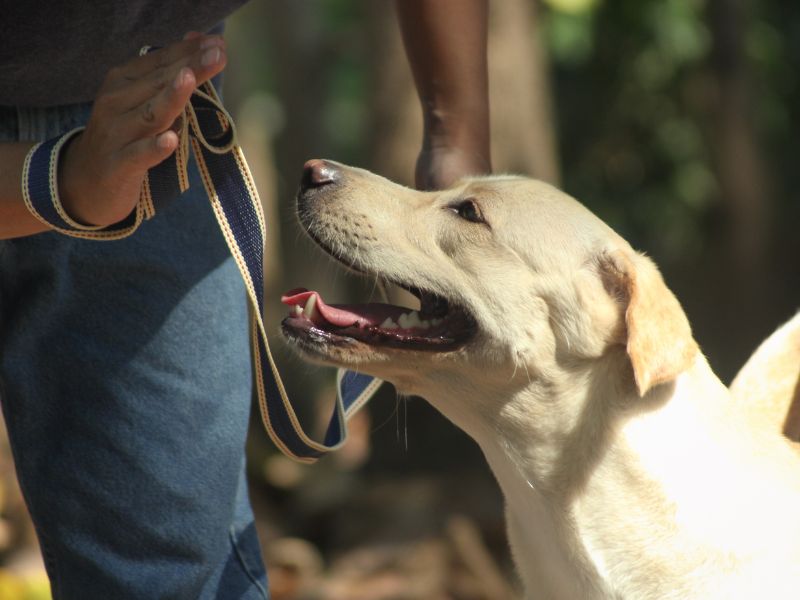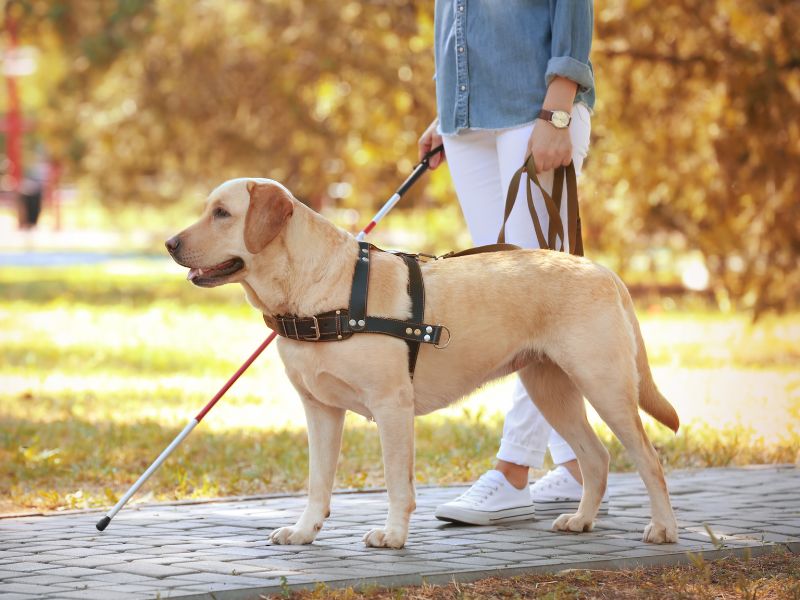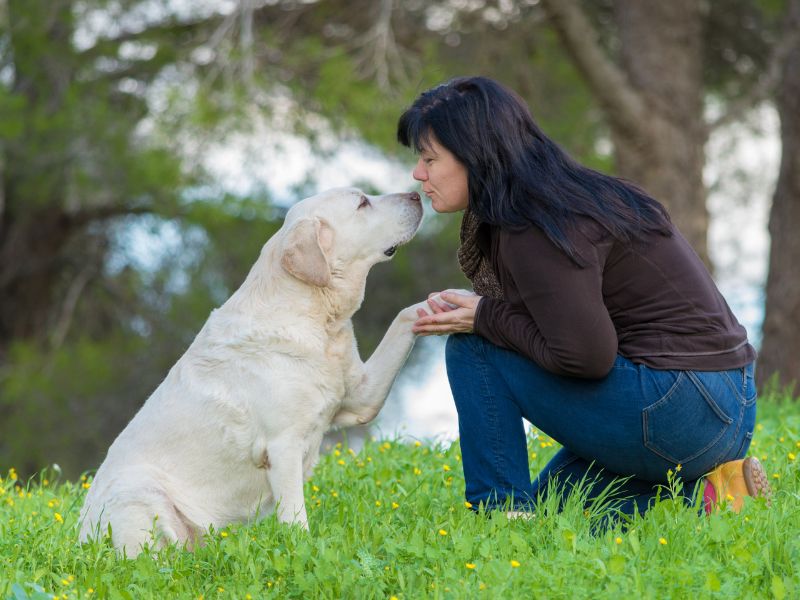
Teaching a dog appropriate behavior is a vital part of caring for a pet, as it encourages good habits and fosters clear communication between the dog and its owner. It’s important to note that discipline isn’t about harsh punishment; instead, it’s a necessary process for shaping a dog’s behavior so they can navigate daily situations effectively. To discipline a dog properly, it’s essential to use a variety of techniques including positive reinforcement, timeouts, and proactive measures like crate training. Addressing misbehavior promptly is key, as dogs struggle to understand consequences for past actions. It’s crucial to avoid physical punishment and stay calm while correcting a dog, as physical force can harm the bond between a pet and their owner, resulting in issues like anxiety, fear, and aggression. Through consistent and gentle disciplinary methods, dog owners can develop a loving and respectful relationship with their furry companions.

Training a dog with discipline is a crucial part of their development, but it should always be done kindly and effectively. Using punishment methods, such as causing pain, is not the way to go. Instead, it’s important to find ways to correct a dog’s behavior without resorting to physical or harsh methods. One effective way of disciplining a dog is through using commands to stop unwanted behavior. By giving a command to halt the behavior and then another command for a desired action, such as sitting or coming to you, you can reinforce positive behavior and deter negative actions. Rewarding the dog with treats or praise further encourages good behavior. Removing triggers that cause bad behavior is another successful strategy. For example, if a dog barks excessively at passersby, closing the curtains can eliminate the trigger and reduce barking. Combining this tactic with other training methods is key to achieving long-term success. Negative punishment can also be effective in correcting a dog’s behavior. By taking away something the dog values, like attention or a toy, in response to undesired behavior, the dog can learn to associate their actions with the loss of something they care about, leading to better behavior choices. In summary, always focus on using humane and effective methods when disciplining a dog. By incorporating techniques like giving commands, removing triggers, and applying negative punishment, you can encourage appropriate behavior without resorting to harsh treatment. Disciplining a dog is vital for creating a safe and harmonious environment for both the dog and its owner. It sets boundaries and helps prevent unwanted behaviors, fostering well-adjusted furry family members. Establishing consistent rules early on and reinforcing them throughout a dog’s life is key, along with regular training sessions to reinforce positive behaviors. Proper discipline also enhances the quality of walks and outdoor activities, ensuring a pleasant and safe experience for both the dog and owner. Additionally, a disciplined dog is more likely to be well socialized and adaptable, reducing risks to other animals, people, and property. In essence, discipline in dog training should be focused on positive reinforcement and redirection, rather than punishment. This approach not only fosters better behavior but also strengthens the bond between a dog and its owner.

There are several reasons why it’s important to discipline your dog without using punishment. Firstly, positive reinforcement methods focus on rewarding good behavior, leading to a happier and more well-adjusted furry friend. Secondly, using treats and clicker training techniques can help your dog understand your expectations better and promote a positive learning experience. Thirdly, being patient and consistent in your training efforts can build trust and strengthen the bond between you and your canine companion. Lastly, redirecting unwanted behavior towards more appropriate actions can effectively teach your dog good manners and habits without instilling fear or causing harm. Embracing positive discipline methods can lead to a harmonious relationship with your dog and foster a positive environment for both of you to thrive in.

Disciplining your dog without punishment is key to creating a nurturing training environment and building a strong connection with your furry companion. Rather than resorting to punishment, consider these four benefits of using more effective and compassionate disciplinary methods: 1. Foster a Desire for your Dog to be in Your Company: The Labrador Site emphasizes that punishing your dog can diminish their desire to be around you. Constant punishment can instill fear or resentment, potentially straining the bond between you and your pet. 2. Versatile Training Methods: Using punishment as discipline can limit its effectiveness in various training scenarios. By focusing on positive reinforcement and gentle guidance, you can tackle a wider range of training situations and help your dog learn more efficiently. 3. Develop Decision-Making Skills: Continuous punishment can hinder your dog’s ability to make decisions. By employing balanced discipline techniques that don’t involve punishment, you empower your dog to make proactive choices, enhancing their confidence and problem-solving abilities. 4. Maintain Composure as a Handler: Remaining calm and patient is crucial in effectively disciplining your dog. Punishment may hinder your ability to stay composed and respond appropriately to your dog’s training needs. Utilizing non-punitive disciplinary methods allows for a more focused and successful training approach. Using punishment in dog training can diminish your dog’s willingness to engage with you. Negative associations with punishment can erode trust between you and your pet, potentially leading to anxiety and fear in your furry friend. To foster a positive relationship and ensure your dog’s well-being, experts recommend focusing on positive reinforcement and gentle discipline during training sessions. This approach not only encourages desired behaviors but also strengthens the bond between you and your dog, making training more enjoyable and effective for both parties.

Using punishment as a method of dog training requires careful and timely application to be effective. However, many dog owners struggle with this due to various factors. Firstly, the punishment must be enough to deter undesirable behavior, but not too severe to harm the dog. Finding this balance can be a challenge for pet owners. Timing is also crucial when applying punishment as it needs to be immediate to link it to the unwanted behavior. Dogs have a short window to associate consequences with their actions, making this aspect tricky. Consistency is key in punishment to avoid confusion for the dog, which can make the training process frustrating for both pet and owner. It’s important to be mindful of potential side effects such as fear or anxiety that can result from harsh or inconsistent punishment. This can hinder future training efforts and lead to negative behaviors in the dog. For helpful dog training tips, Pippa Mattinson is a highly recommended resource known for her expertise in the field. Platforms like The Happy Puppy Site and Dogsnet offer a wealth of valuable information on positive puppy training, obedience commands, and improving dog behavior. By incorporating Pippa’s training tips, dog owners can expect a well-behaved and obedient furry companion.

Choosing to train dogs with positive reinforcement is a more effective approach compared to using punishment. Dogs that are rewarded for their desirable behaviors are more likely to learn quickly and confidently. On the other hand, punishing a dog can lead to fear, hesitation, and insecurity, hindering their ability to make decisions swiftly. When dogs are trained using rewards, they learn to associate good behavior with positive outcomes, encouraging them to repeat those actions in the future. This method not only helps in eliminating unwanted behaviors but also strengthens the bond between the dog and its handler. It is important for handlers to remain calm and composed during training sessions to create a conducive learning environment for their dogs. Redirecting their attention, providing positive reinforcement, or implementing time-outs are alternative methods to punishment that can effectively shape a dog’s behavior without instilling fear or anxiety. By incorporating rewards into the training process and maintaining a calm demeanor, handlers can establish trust and mutual understanding with their dogs, resulting in a harmonious and fulfilling relationship.

Teaching your dog new behaviors and reinforcing good habits through positive reinforcement, or rewards-based training, is a popular and effective approach. This method focuses on rewarding your dog for correct behaviors rather than punishing them for mistakes. Using rewards during training not only strengthens the bond between you and your dog but also promotes a love of learning. The key to successful reward-based training is to use high-value rewards that are specific to your dog, such as their favorite treats or toys. It’s important to keep training sessions short, fun, and engaging to maintain your dog’s interest and motivation. One effective technique for reward-based training is using a clicker or a specific word as a marker to signal when your dog has performed the desired behavior correctly, followed immediately by a reward. This helps your dog quickly learn the association between the marker, behavior, and reward. In addition to treats and toys, praise and physical affection can also be used as rewards during training. Remember to be consistent, patient, and adjust your approach to fit your dog’s personality and preferences. This will lead to improved communication, trust, and a stronger bond between you and your furry friend, resulting in a well-mannered and happy dog. It’s crucial to discipline your dog consistently, timely, and reinforce good behavior. Utilize commands like “no” to stop undesired behaviors and follow up with appropriate actions, such as removing them from the room or withholding treats and affection. By establishing boundaries and promoting positive behavior, you can effectively discipline your dog without resorting to physical punishment. Start the training and discipline process early in your dog’s life to ensure they develop good habits that will last a lifetime. As a responsible dog owner, it’s up to you to make sure your dog is well-behaved by using effective discipline techniques.


